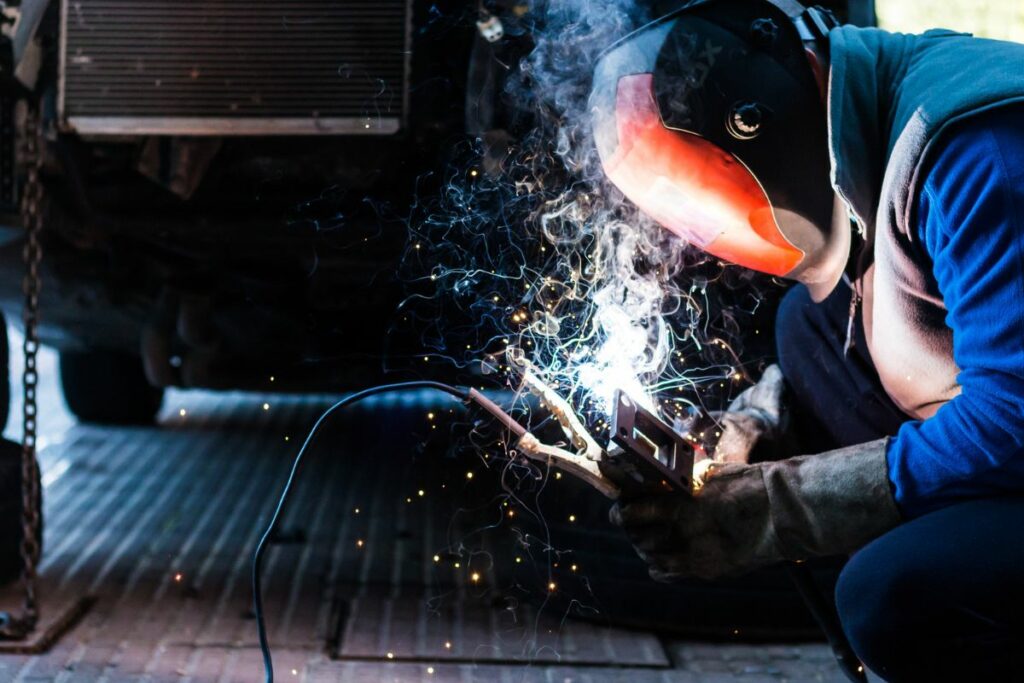
In the world of do-it-yourself (DIY) projects, welding is a skill that opens up a whole new realm of possibilities. Whether you’re an experienced DIY enthusiast or just starting out, learning how to weld can greatly enhance your ability to create and repair items around the house. However, welding can be intimidating for beginners. To help you get started and achieve successful results, we’ve compiled a list of essential tips and tricks for home welding projects.
Before you dive into any welding project, prioritize safety. Welding involves intense heat, bright light, and hazardous fumes. Protect yourself by wearing proper safety gear, including a welding helmet with a dark, UV-resistant lens, flame-resistant clothing, welding gloves, and steel-toed boots. Additionally, make sure you work in a well-ventilated area or use a welding hood with an exhaust system to remove fumes.
There are several welding techniques to choose from, such as stick welding (shielded metal arc welding), MIG (metal inert gas) welding, and TIG (tungsten inert gas) welding. Each technique has its own strengths and applications. Stick welding is versatile and suitable for outdoor projects, while MIG welding is easier to learn and works well with thicker materials. TIG welding is more complex but provides precise and high-quality welds. Research and select the technique that best suits your project requirements.
Before you start welding, make sure your work area is clean and free from any flammable materials or clutter. Remove paint, rust, and dirt from the metal surface using a wire brush or grinder. Proper preparation ensures better weld penetration and prevents contamination, resulting in stronger and more reliable welds.
Mastering welding requires practice. Begin by practicing on scrap metal pieces to hone your skills and gain confidence before tackling your actual project. Pay attention to the angle, speed, and distance between the welding torch and the metal surface. Experiment with different techniques and settings to find the optimal combination for your specific project.
Not all metals can be welded together easily. Different metals have varying melting points, compositions, and characteristics. It’s crucial to understand the compatibility of the metals you’re working with to ensure a successful weld. Research and consult welding reference charts to determine the appropriate welding process and consumables for specific metal combinations.
One of the biggest challenges in welding is maintaining proper heat control. Excessive heat can weaken the metal or cause distortion, while insufficient heat can result in a weak weld. Adjust the heat settings on your welding machine according to the thickness of the metal being welded. Maintain a steady welding speed to prevent overheating or underheating the metal. Practice controlling heat and speed to achieve consistent, strong welds.
Selecting the right electrodes or filler wire is crucial for achieving a high-quality weld. Different electrodes or filler wires are designed for specific applications and metals. Ensure that the consumables you choose are compatible with your welding technique and the type of metal you’re working with. Consult the manufacturer’s recommendations or seek advice from experienced welders to make the best choice.
The quality and ease of your welds can be significantly influenced by the positions in which you weld. Flat, horizontal, vertical, and overhead positions all require different techniques and adjustments. Practice welding in various positions to gain proficiency and ensure you can handle any project that comes your way.
After completing a weld, it’s important to clean the weld bead using a wire brush or grinder to remove any slag or impurities. Inspect the weld for cracks, voids, or defects. If necessary, grind down and re-weld any problematic areas. Taking the time to clean and inspect your welds ensures that they are structurally sound and will last.
Welding is a skill that continuously evolves with new techniques and technologies. Stay up to date with the latest advancements, attend workshops, and join welding forums or communities. Engage with experienced welders, ask questions, and learn from their expertise. The more you learn and practice, the better you’ll become at welding and the more confident you’ll feel in tackling advanced projects.
Welding can be an incredibly rewarding skill for any DIY enthusiast. By following these tips and tricks, you’ll be well on your way to mastering the art of welding and creating impressive projects that will stand the test of time. Remember, practice makes perfect, so don’t be afraid to dive in, experiment, and enjoy the journey of becoming a skilled welder.